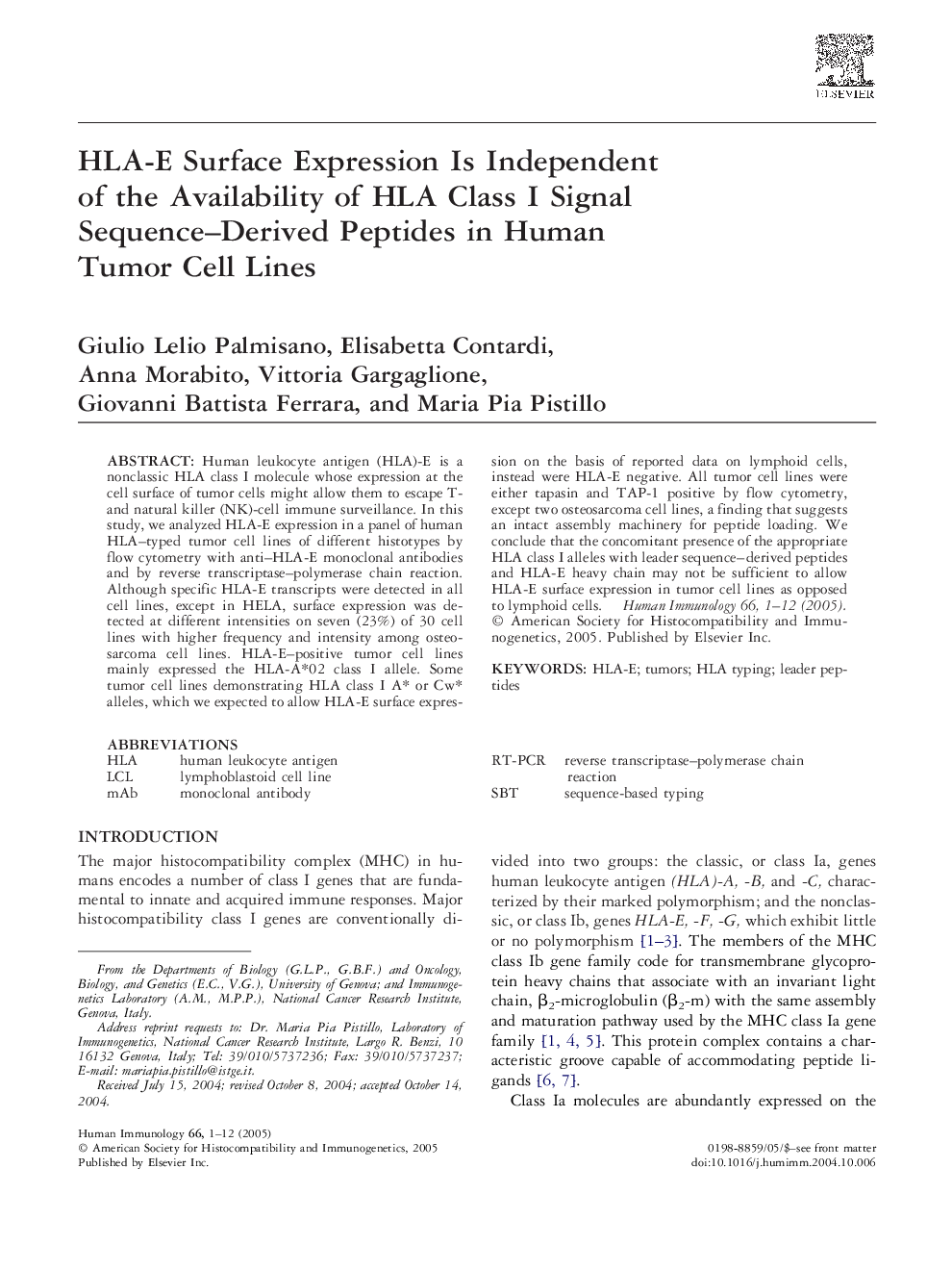| Article ID | Journal | Published Year | Pages | File Type |
|---|---|---|---|---|
| 9264856 | Human Immunology | 2005 | 12 Pages |
Abstract
Human leukocyte antigen (HLA)-E is a nonclassic HLA class I molecule whose expression at the cell surface of tumor cells might allow them to escape T- and natural killer (NK)-cell immune surveillance. In this study, we analyzed HLA-E expression in a panel of human HLA-typed tumor cell lines of different histotypes by flow cytometry with anti-HLA-E monoclonal antibodies and by reverse transcriptase-polymerase chain reaction. Although specific HLA-E transcripts were detected in all cell lines, except in HELA, surface expression was detected at different intensities on seven (23%) of 30 cell lines with higher frequency and intensity among osteosarcoma cell lines. HLA-E-positive tumor cell lines mainly expressed the HLA-A*02 class I allele. Some tumor cell lines demonstrating HLA class I A* or Cw* alleles, which we expected to allow HLA-E surface expression on the basis of reported data on lymphoid cells, instead were HLA-E negative. All tumor cell lines were either tapasin and TAP-1 positive by flow cytometry, except two osteosarcoma cell lines, a finding that suggests an intact assembly machinery for peptide loading. We conclude that the concomitant presence of the appropriate HLA class I alleles with leader sequence-derived peptides and HLA-E heavy chain may not be sufficient to allow HLA-E surface expression in tumor cell lines as opposed to lymphoid cells.
Keywords
Related Topics
Life Sciences
Immunology and Microbiology
Immunology
Authors
Giulio Lelio Palmisano, Elisabetta Contardi, Anna Morabito, Vittoria Gargaglione, Giovanni Battista Ferrara, Maria Pia Pistillo,
